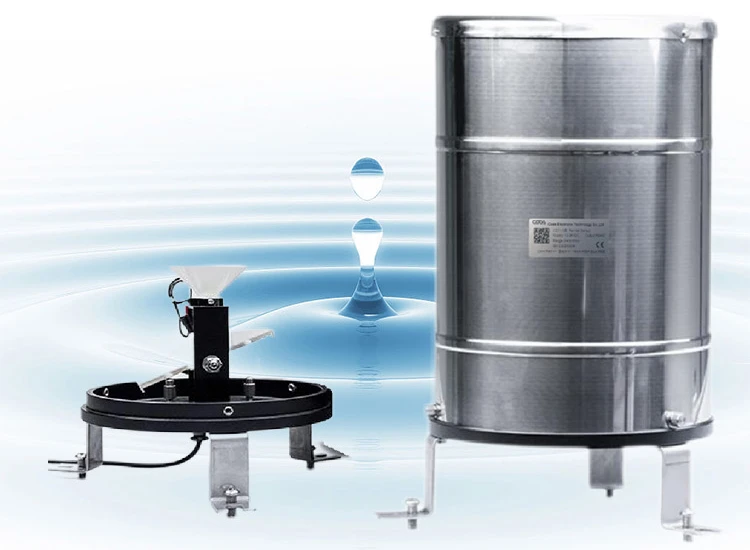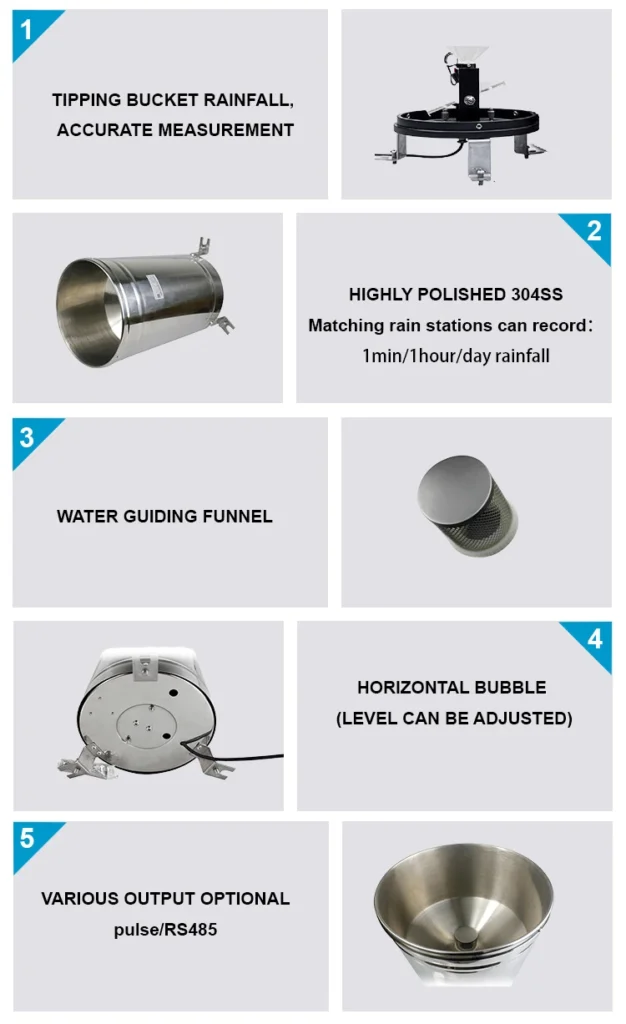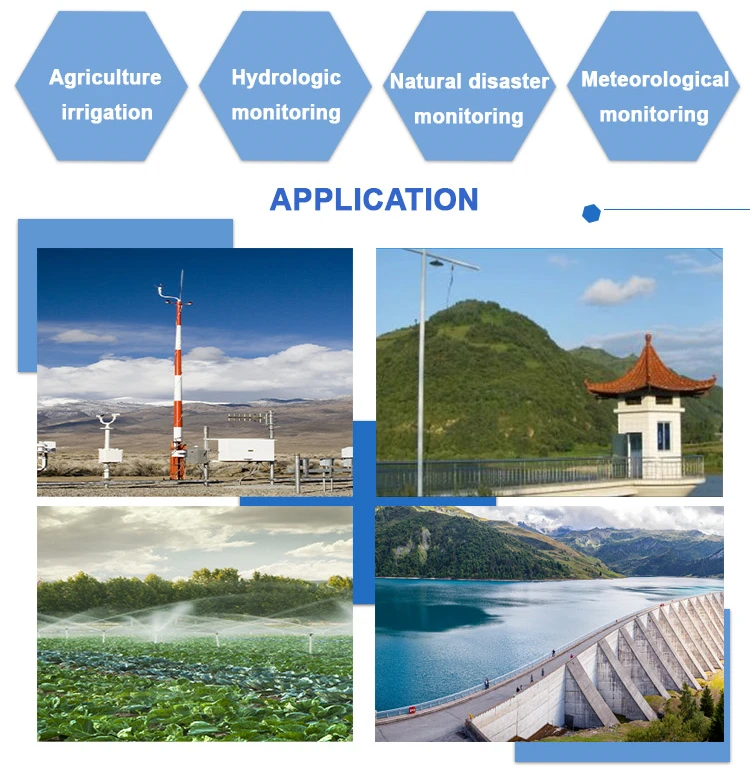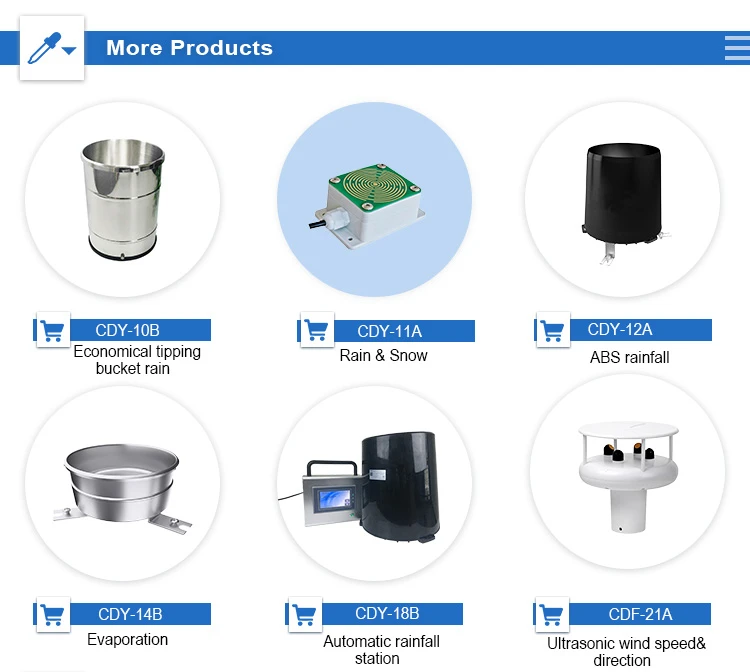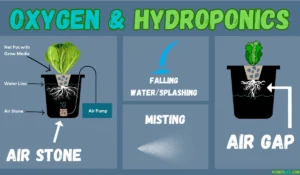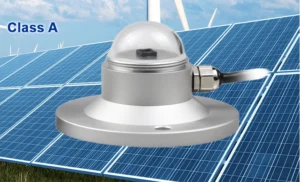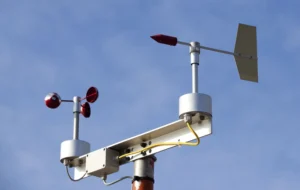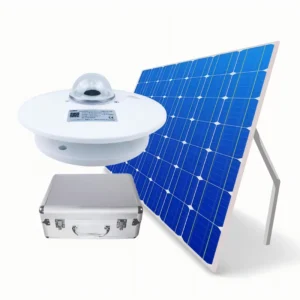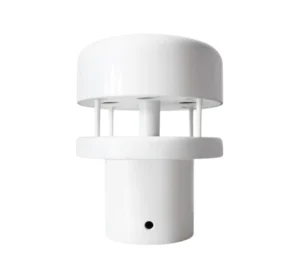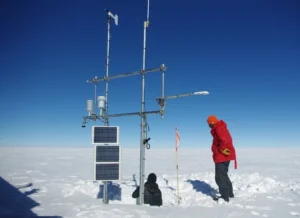The applications of automatic rain gauges
An automatic precipitation gauge, also known as a digital rain gauge, measures and records rainfall on its own. Here are some key features of automatic rain gauges:
1. Sensor Technology: These type of rain gauge use advanced sensors. They can use a tipping bucket rain gauge or a weighing system to measure rain. The sensors respond to the impact or weight of raindrops. They change this into data that can be measured.
2. Data Collection: Automatic rainfall sensor have data loggers or storage. This lets them collect rainfall data all the time. It helps to track and study rainfall patterns clearly.
3.Some rain gauges come with wireless transmitters. This lets them send data to a central hub or weather network. Some people may use wired connections to share data.
4.Engineers design rain gauges to measure rainfall correctly. These gauges are checked and tested to ensure they give reliable results.
5. Self-Emptying Mechanism: Many automatic wireless rain gauge can empty on their own. This feature removes the rainwater after it has been measured. It stops new rainfall from changing the accuracy of the readings.
6. Integrators can add rain gauges to weather stations or networks. They can use other weather tools to give full weather information.
7. Power Source: These gauges usually need power from batteries or solar panels to work. This energy helps them keep running and gather data, even in faraway places.
An automated rain gauge measures how much it rains in one place over time. These tools have sensor automatically that can detect rain and how much there is. People often use them with data loggers or tracking systems. This helps them keep track of and share the information they collect.
The roles of an automated rain gauge encompass:
1. Precipitation Measurement: This shows how much rain falls. This data is important for many reasons. It helps with farming, water studies, and weather forecasts.
2.Data Collection : Automated rain gauges collect rainfall data all the time. This helps us watch and study rainfall patterns as they happen.
3.You can set up automatic rainfall sensor in remote areas. This helps collect rainfall data from places that are hard to reach.
4. Automated rain gauges provide data to weather networks. This helps improve weather forecasts for regions and the whole country.
Applications of Automatic Rain Gauges
Rain gauges have many useful purposes. Here are some common ways they are used:
1. Weather Monitoring:
Automated rain gauges are used in weather systems. They provide real-time data on rainfall. This data helps weather experts track weather patterns, study rainfall trends, and make accurate forecasts.
2. Agriculture:
Rain is very important for farming. It affects how much water crops need and how they grow. Automatic rain gauges help farmers track rainfall. This helps them choose better ways to water their crops.
3. Hydrology and Water Resources Management:
Measuring rainfall correctly is important for studying water and managing resources. Automated rain gauges provide data that helps hydrologists learn about the water cycle. They also help figure out runoff, estimate water supply, and plan how to use reservoirs.
4.Flood Forecasting and Early Warning Systems
Keeping track of rainfall is important for predicting floods. Rain gauges help in this process. They are important for systems that give early warnings.
These gauges measure heavy rain and how strong it is. They help to predict the risk of floods. They also send alerts to places that are at risk.
5.Urban Planning and Infrastructure:
Data on rainfall from automatic rainfall gauges is important for city planners and engineers. They use this information to design drainage systems, roads, and buildings. Accurate measurements show how rain affects buildings and roads. This helps them plan better.
6.Automated rain gauges are important for environmental research.
They offer rainfall data for a long time. This data is important for studying nature. It helps manage watersheds and learn about climate change. It also helps to show how ecosystems work.
These examples show how different sectors use automatic rainfall gauges. They gather accurate rainfall data. This data helps us decide about weather, farming, water, and infrastructure.
Summary
Automatic rain gauges provide simple and reliable ways to measure rainfall. Their automated features give accurate readings and collect data. These tools are important for checking the weather, studying water, farming, and more.
